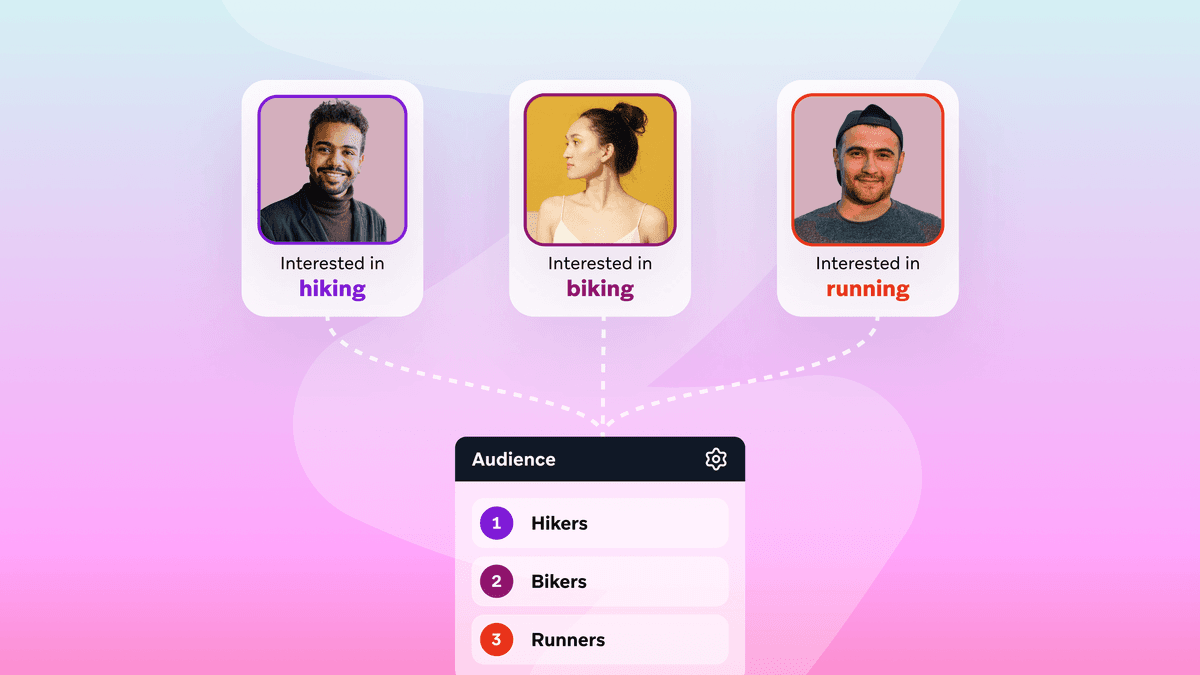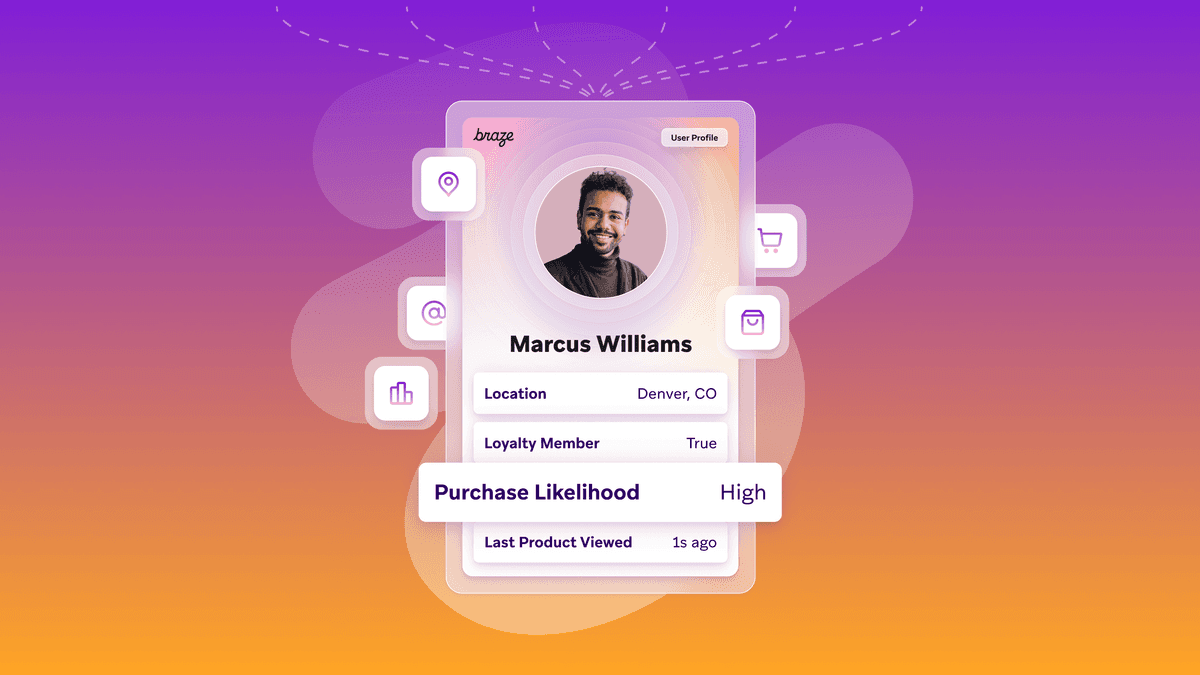Your Customers Are Telling You How To Reach Them—Listen
Published on February 12, 2016/Last edited on February 12, 2016/7 min read


Todd Grennan
Managing Editor, Content Marketing at BrazeCustomer attention is a limited resource. Mobile has made it easier to reach your audience members whenever and wherever—but it’s made it easier for other brands, including your competitors, to reach them, too. And when customers feel that they’re receiving too many messages or messages that aren’t meaningful to them, they disengage.
Some do it by ignoring messages that don’t resonate. Others opt out of email or push notifications (or uninstall apps that they feel are spamming them). Either way, it makes it harder for brands to reach, engage, and eventually monetize those customers. To break through the noise, marketers need a way to increase the chances that customers welcome and engage the outreach they send. And one of the best ways to do that is personalization.
What is personalization?
When a brand customizes the outreach that they send based on the individual who will be receiving it, that’s personalization. Personalization can take a lot of forms: it can be as simple as adding a customer’s name to an email, or as complex as using dynamic content to insert real-time weather data into a push notification.
When brands first start using personalization, they often focus on name-based personalization, because the only customer data it requires is the recipient’s name and because even this basic level of personalization can do a lot to boost the success of your campaigns: a study by Appboy (that’s us!) found that using personalization in a message increased conversions by 27%.
So why not just personalize based on names and call it a day?
Because personalization can do more than just goose your conversions. In today’s mobile-first world, it isn’t enough to convince users to open your app or make a purchase—you need to build relationships that support the engagement, retention, and monetization of your customers over the long-term.
Taking advantage of other forms of personalization can help you get there. By using customer attributes and events to personalize your outreach, you can send messages that your audience is more likely to find relevant to their needs and that demonstrate the value they can get from engaging with your brand. That’s powerful.
Okay, but what are customer attributes and events, anyway?
Well, they’re pieces of data that inform your understanding of your audience and their behavior. And while customer attributes and customer events both play a major role in this type of personalization, they are distinct—if complementary—types of information and should be understood as such.
Customer attributes
A customer attribute is data about who a customer is as an individual. For instance:
- What language do they speak?
- What time zone are they in?
- What’s their favorite color?
Customer events
A customer event provides information about customer behavior within your app, on your website, or with your other channels. For instance:
- Have they abandoned a shopping cart?
- Have they watched your app’s onboarding tutorial video?
- Have they rated your app?
Together, customer events and attributes can give marketers a vivid picture of each customer and the ways they’re engaging with your app, website, and brand.
How do you get your hands on this kind of customer data?
In general, the best way is to make use of an intelligent CRM platform. By integrating the platform’s SDK into your app and/or website, you can automatically identify and track this sort of information. Some platforms track a large number of customer events and attributes automatically; others don’t, requiring marketers to set up custom tracking to record the data needed to power this kind of personalization. (To get a better sense of what kind of information your brand will want to track as part of its marketing efforts, check out our blog post on effective customer data collection.)
How do you personalize using customer events and attributes?
There are two main ways to use this kind of personalization, and they can be used by themselves, or in concert:
1) Insert customer events or attributes into messages

This approach is pretty simple: instead of drawing recipients’ names from your brand’s user profiles and inserting them into push notifications, emails, in-app messages, or News Feed Cards, you can add relevant custom attributes or events.
For instance, if you’re sending out a promotional message to your audience, you could include a reference to each customer’s favorite brand of shoes (a customer attribute) and note whether or not they’ve made a purchase in the past (a customer event). This kind of personalization makes it possible for marketers to send a message to large numbers of people while simultaneously treating each recipient as an individual with their own unique qualities and interests. (There’s also a way to dig even deeper, using event properties, but we’ll get to that in a moment…)
2) Use customer events or attributes to determine message variants

Instead of adding a customer event or attribute to a particular message, marketers can take advantage of this kind of personalization to adjust which version of a message a customer sees, based on their user profile and previous interactions with that brand. For instance, you could build a campaign that automatically sends one version to customers who are members of your brand’s loyalty program and a second version to customers who have yet to join. By taking advantage of this kind of personalization to adjust the outreach that customers receive based on their user profile, marketers can make their messages responsive and relevant without a lot of extra effort.
So what are event properties?
Think about it this way: while customer events are designed to provide general information about a customer’s behavior, like whether they’ve abandoned a shopping cart, customer event properties provide an additional layer of data on those events, such as the dollar value of the shopping cart they abandoned.
Having this additional information makes it possible for marketers to—for instance—create an effective campaign to convince customers to complete a purchase. You could craft one version that’s aimed at customers who abandoned a cart with less than $10 of items in it, as well as a variant targeting potential high-rollers who abandoned a cart valued at $200 or more, with customers in the middle receiving a more general message. By allowing for this sort of granular targeting, you can make your campaigns even more responsive and relevant to the people receiving them.
What happens if you send a message that contains personalization based on a customer event or attribute that some customers haven’t shared?
It shouldn’t be a problem, as long as you do a little advance planning. The smart approach is to create a default campaign variant that doesn’t contain any personalization and have it sent to any customers who don’t have data for the customer events or attributes that you’re using in your personalized messages. That makes it possible to send personalized campaigns without having to worry that some customers will receive outreach with copy that appears incomplete or broken.
Are there any downsides to personalizing based on customer events and attributes?
There’s one big potential downside. Personalization can be a powerful tool for making your customers feel understood and valued, but if it isn’t used thoughtfully, it may lead your audience to feel like you’re monitoring them in ways they’re not okay with. That can make customers more reluctant to share personal data or engage with your brand’s outreach, undermining the effectiveness of your marketing efforts on mobile and beyond.
How can you avoid this outcome? Well, in general, brands are on solid footing if their use of customer events and attributes in their personalization directly benefits the people receiving those customized messages. Getting a push that recommends a great donut shop in your neighborhood feels useful; getting one that references where you live for no particular reason feels unsettling and a little stalker-y. So make sure that the customer events and attributes that you’re collecting and using in your message personalization are adding value.
Anything else?
Well, yeah. Personalized messages using customer events and attributes is a great start, but there are even more ways to leverage personalization to send better messages. Take a look at our personalization overview for a comprehensive look at how brands can use personalization to support customer relationships in effective, non-creepy ways.
Related Tags
Be Absolutely Engaging.™
Sign up for regular updates from Braze.




